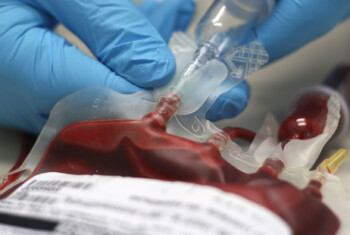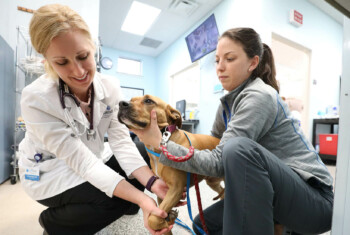How to Minimize the Incidence of CAUTI in your Hospital
Did you know that up to 50% of ICU small animal patients with indwelling urinary catheters are affected with a catheter associated urinary tract infection (CAUTI)? These infections are known to increase morbidity and mortality in our patients.
The BluePearl Patient Safety and Infectious Disease committees would like to provide recommendations for indwelling urinary catheter care, in order to minimize the incidence of CAUTI in your hospital. By minimizing these infections, we can provide safer care for our patients.
Urinary catheter care
One of the most important aspects of urinary catheter care is related to hygiene (both personal and patient). Before tampering with any aspect of the catheter, appropriate hand hygiene should be performed, and clean examination gloves should be donned.
Patient hygiene is also important. Both the Center for Disease Control (CDC) and the American Animal Hospital Association (AAHA) recommend that general hygiene of a patient with an indwelling urinary catheter should be performed every 12-24 hours. If the patient becomes soiled or dirty, hygiene may be needed more frequently.
Perineal hygiene can be accomplished by cleansing the patient’s perineal area with soap and water, gentle shampoo and water, or even baby wipes. After perineal hygiene is performed, cleansing of the patient’s prepuce or vestibule should be done.
Using sterile gauze sponges, the junction of the patient and the urinary catheter should be cleansed with alternating dilute 0.5-2% chlorhexidine solution or a 1:200 povidone iodine solution in sterile saline and sterile saline consecutively, at least three times. Additionally, the prepuce or vestibule should be flushed two to five times consecutively with 0.5-10 mL of dilute chlorhexidine solution or povidone iodine solution, depending on the size of the patient.
The collection system
The closed urinary collection system should be secure as much as possible. Minimizing disconnection of urinary catheter from the urinary collection system can also minimize the incidence of CAUTI. This can be accomplished in a few ways.
First, use a urine collection system with a urometer so that you can visually assess the volume of urine collected, rather than opening the system to collect, drain and measure the volume of urine when the urinary collection system is not full.
If a collection system without an urometer is used, the bag may be weighed to estimate urine volume. This can be accomplished by pre-weighing the empty collection system, weighing the collection system when urine is contained within, subtracting the weight of the empty bag from the bag containing urine, and converting weight in kilograms to volume in milliliters (1 kg = 1,000 mL).
When possible, it is recommended to always use a urine collection system that has a twist valve at the bottom of the collection system to drain urine for quantification. Prior to opening the twist valve, the valve should be wiped with isopropyl alcohol and allowed to air dry. Assure that the twist valve does not come in direct contact with a non-sterile container when emptying the system. If at any point disconnection of the collection system from the urinary catheter occurs and sterility is questioned, the sterile collection system should be replaced, followed by catheter care as described above.
Try not to flush
Preventing retrograde (backward) flow of urine from the catheter, collection system, or urine bag can also help to minimize CAUTI. This can be accomplished by:
- Never flushing the catheter retrograde
- Keeping the collection bag below the level of the patient’s bladder
- Using a collection system that contains an anti-reflux valve
- Clamping the system closed when a patient is moved or walked when using bags that do not have an anti-reflux valve.
The collection system should never be placed directly on the floor, but instead should be hung on a cage door or placed on a clean potty pad or disposable tray at a level below the patient.
Additional ways to minimize CAUTI
- Do not change or replace the indwelling catheter or collection systems at routine, fixed intervals. Catheters or collection systems may need to be replaced in certain situations such as infection, obstruction, or when sterility of the collection system is in question.
- Avoid urinary catheterization if not completely necessary. Do not administer prophylactic antibiotics to a patient that has an indwelling urinary catheter. Antibiotics should only be administered if a clinical urinary tract infection is documented. Antibiotic selection should be based on culture results and should ideally be started after indwelling urinary catheter removal.
- Daily reassess the need for the urinary catheter. If it is not imperative, consider prompt removal.


